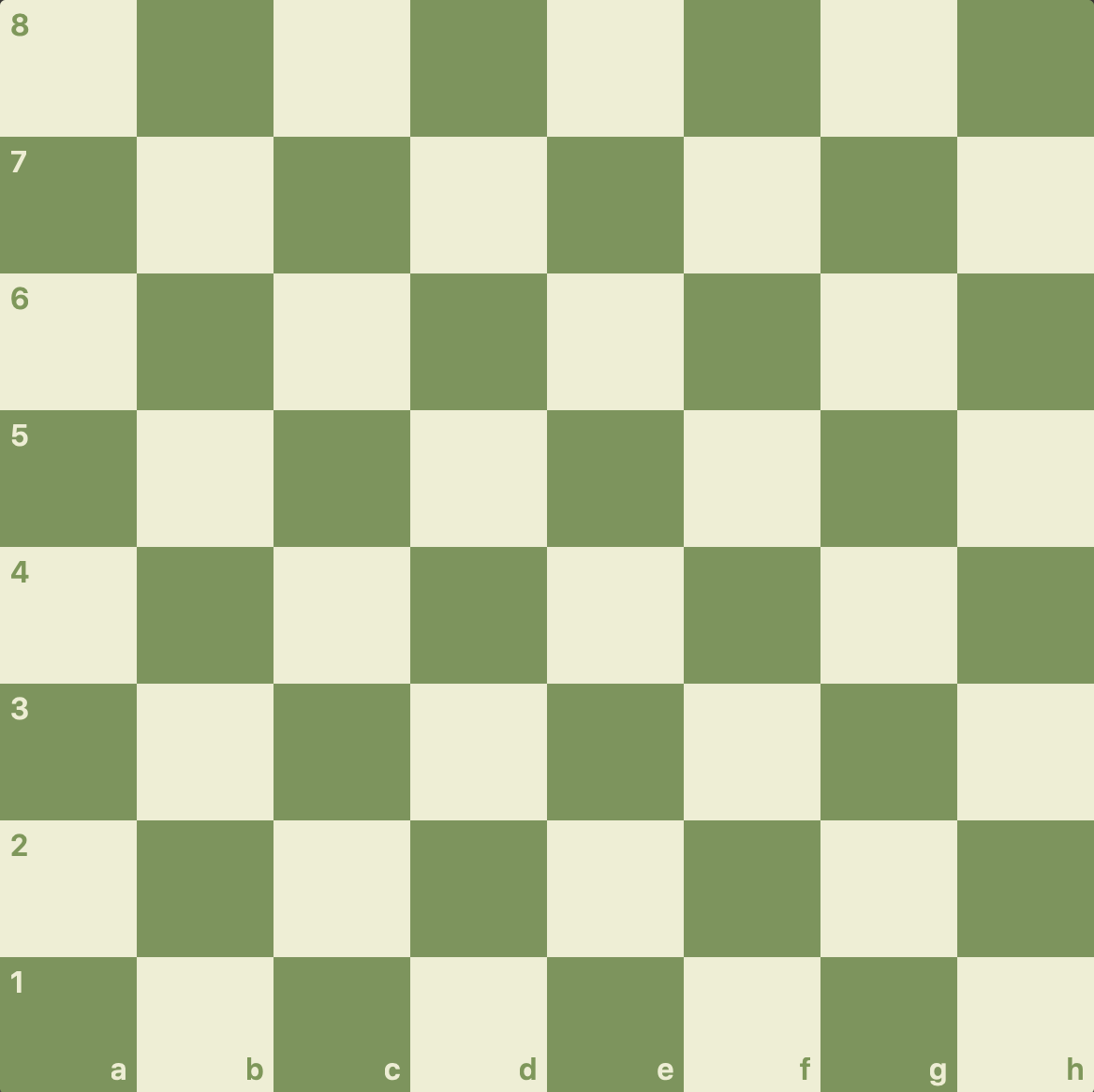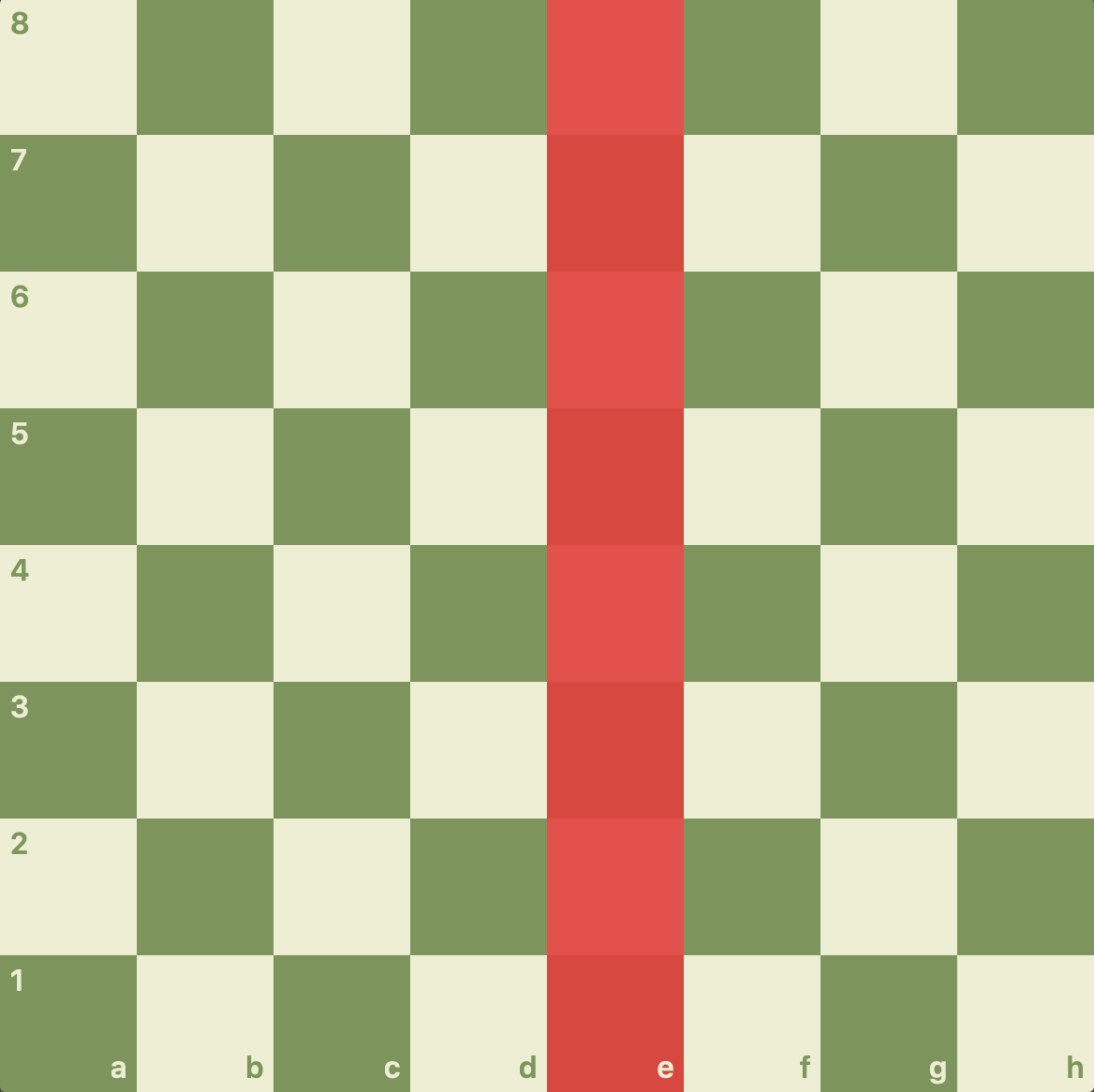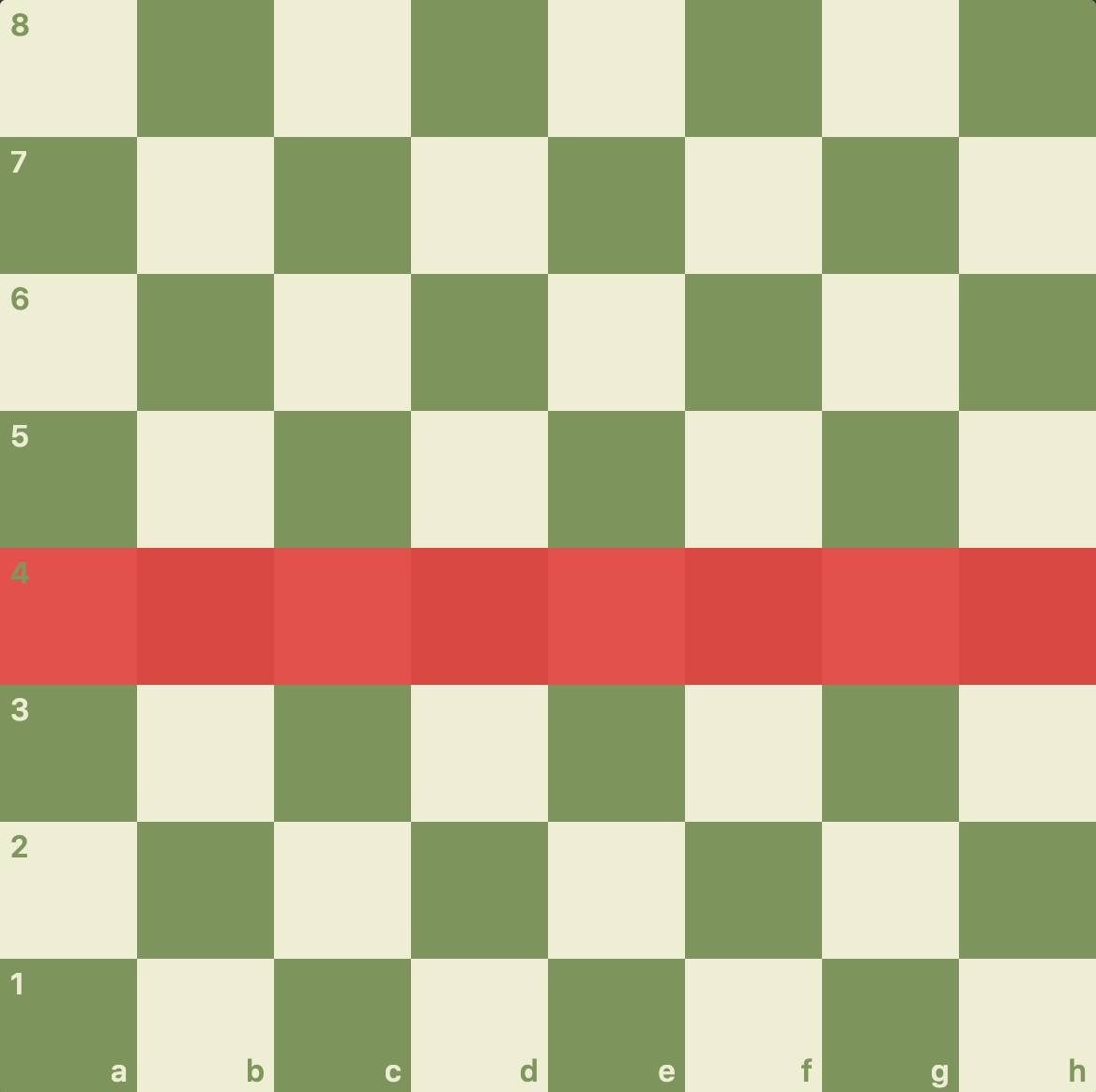The Chess Board
Chessboard
When learning chess, the most important component to start with is the board. The chessboard is not as simple as it seems! Here is what you need to know about the chessboard:
The Chessboard
The chessboard is an 8x8 grid of alternating colored squares. Half of the 64 squares are called light squares, while the others are known as dark squares. When setting up a chessboard, you should always have a light square on the lower right (like the h1-square in the image below).
 The chessboard.
The chessboard.
Square Name
Have you ever wondered how people can play blindfold chess? Well, one of the reasons they can do this (aside from talent, skill, experience, and mastery) is because they know the name of every square on the chessboard.
Every square on a chessboard has an alphanumeric name (or coordinate). We can locate the name of each square very easily! How do we do this? First, we locate the file of the square, and then it's rank.
Files
Files are the names of each vertical row (or column) on the board. Each file has an alphabetical assignment (a through h). Highlighted below you will see the e-file.
 The chessboard with the e-file highlighted.
The chessboard with the e-file highlighted.
Ranks
Ranks are the names of each horizontal row on the board. Each rank has a numerical assignment (1 through 8). Highlighted below you will see the fourth rank.

Why chess board has 64 squares?
64 is a whole square, so that it is as wide as it is long. It happens that it is also THE MOST suitable option for a chess game, because: It is big enough to allow multiple maneuvers and strategical possibilities. It is small enough to let general guidelines be formed.